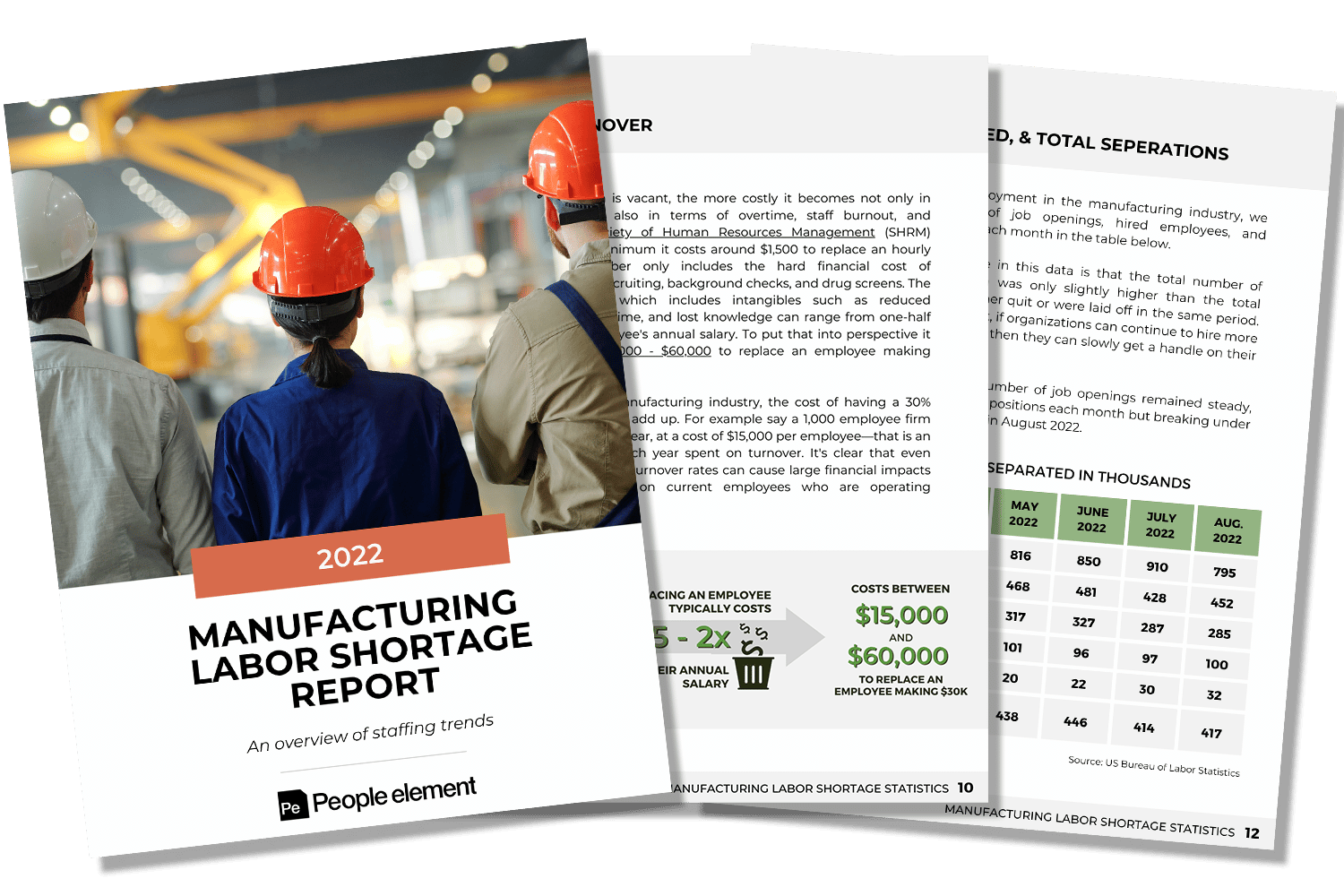
Manufacturing Labor Shortage Report
An Overview of Staffing Trends
We have collected research-based statistics on the ongoing manufacturing labor shortage and compiled predicted employment trends for the industry. Below is a short summary of our findings and the topics covered in depth within this report.
Overview of Employee Sentiment
Feeling valued and treated fairly are two main factors that are affecting motivation, satisfaction, engagement, and chronic stress level for manufacturing employees. Based on research from the Manufacturing Institute, over 90% of manufacturing employees who feel valued and treated fairly say they are highly motivated, engaged, satisfied with their job, and would recommend the company to others. Alternatively, employees who did not feel valued and treated fairly were four times more likely to feel stressed in a typical workday and ten times more likely to look for a new job in the next year.
Aging Employee Populations
By 2030, according to the U.S. Census Bureau, more than 20 percent of U.S. residents are projected to be age 65 and over, compared to just 9.8 percent of the population in 1970. Organizations will need to strategically manage aging workforces to mitigate the impact as the remainder of the Baby Boomer generation retires and leaves the workforce over the next decade.
Impact of COVID-19
It’s no secret that the pandemic had a huge impact on businesses across the board. Before the pandemic hit in 2020, the manufacturing industry’s total employment had been growing steadily. In March 2020 when the majority of businesses were forced to shut down, manufacturing firms took a large hit and around 1.4 million jobs were lost.
Growing Skills Gap
Why does it seem like finding qualified talent has gotten harder each year? That’s because it has. According to Deloitte, finding qualified employees is 1.4 times harder than it was in 2018 with the share of difficult-to-fill positions growing from 34% in 2018 to 46% in 2020.
Industry Perception
The manufacturing industry is having an image challenge. Younger generations entering the workforce have an outdated preconceived notion about what it means to work at a manufacturing firm. Many stereotypes include unsafe working conditions, low wages, and hard manual labor. Even though this is not the case for the majority of modern-day firms, the stigma remains.
Overview of Turnover
As expected, turnover rates across the board spiked in 2020 due to the pandemic but seem to be slowly returning to their pre-pandemic rates. Despite having a lower rate than the total average, the manufacturing industry still has more than one third of employees leave each year making it difficult to maintain adequate staffing levels.
Cost of Turnover
The longer a position is vacant, the more costly it becomes not only in monetary value but also in terms of overtime, staff burnout, and productivity. The Society of Human Resources Management (SHRM) estimates that at a minimum it costs around $1,500 to replace an hourly employee and this does not account for intangible costs such as loss of productivity, and time spent trying to fill the position.
Overview of Tenure
Despite ongoing retention challenges, the manufacturing industry has a relatively long tenure compared to other major industries. This trend seems to indicate that voluntary turnover is happening mainly among newer employees and once they have been with the organization for more than a year, they are in for the long haul.
Job Openings, Hired, & Separations
To get a full picture of employment in the manufacturing industry, we broke down the number of job openings, hired employees, and separations in thousands for each month. Over the months shown, the number of job openings remained steady, with an average of 877,000 open positions each month but breaking under 800,000 for the first time all year in August 2022.





